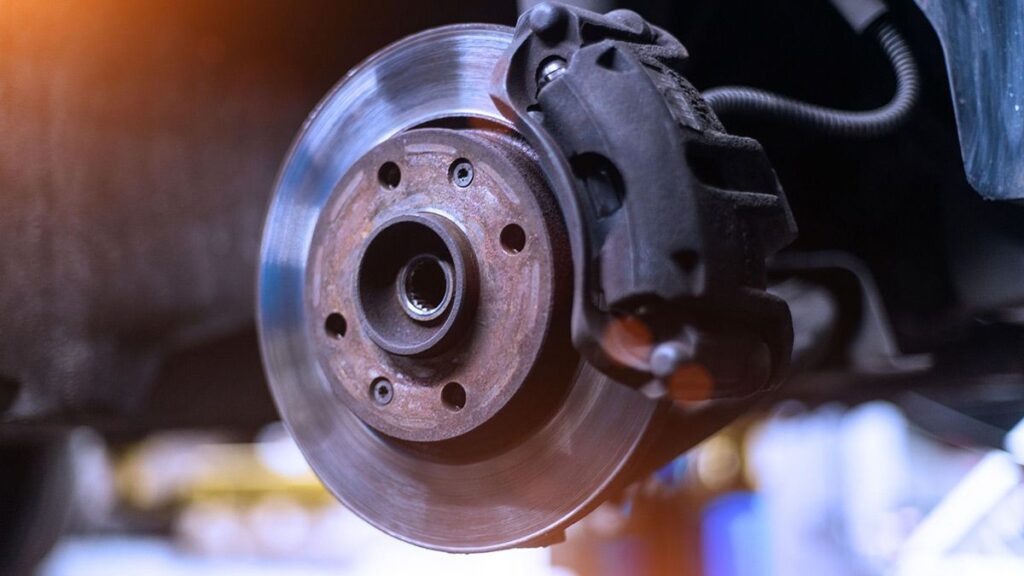Brakes are one of the most critical components of any vehicle, yet they’re often taken for granted until something goes wrong. Most people think of brakes simply as pads and rotors, but the system is more complex than that.
There are calipers, brake lines, fluids, and sensors, all working together to stop a car safely. When any part of this system falters, the results can range from minor inconveniences to serious safety hazards.

Understanding how brakes work, what signs to watch for, and how to maintain them can save both money and stress down the road.
How Brakes Work?
At its simplest, a brake system converts kinetic energy—the energy of motion—into heat, slowing the vehicle. When the brake pedal is pressed, the brake fluid transfers force from the pedal to the brake pads, pressing them against the rotors. This friction slows the wheels.
But it’s not just friction at play. Modern cars often include anti-lock braking systems (ABS) and electronic brake-force distribution (EBD), which adjust braking power based on conditions. ABS prevents wheels from locking during sudden stops, and EBD helps balance braking between front and rear wheels. These systems rely on sensors and electronics, which is why brake problems aren’t always just a matter of worn pads.
Common Brake Problems.
Brake issues can show up in several ways. One of the most obvious is noise—squealing, grinding, or even metallic scraping sounds. Squealing often comes from wear indicators on the pads and is a signal that replacement is needed soon. Grinding usually means the pads are worn down to the metal, which can damage the rotors if ignored.
Vibrations or pulsations when braking are another warning sign. This is often caused by warped rotors or uneven wear. In some cases, it might even indicate problems with calipers or suspension components that affect brake performance.
A soft or spongy brake pedal can be particularly concerning. This usually points to air in the brake lines or a fluid leak. Low brake fluid can also trigger warning lights on the dashboard, but not everyone notices these right away.
How Often Brakes Should Be Checked?
There’s no one-size-fits-all schedule for brake inspections. Most mechanics recommend checking them at least once a year, or every 10,000 to 15,000 kilometers, but this depends on driving habits. Heavy city traffic, frequent towing, or aggressive driving can wear brakes out faster. Even if nothing feels wrong, a routine inspection can catch small problems before they become expensive repairs.
Getting a professional car brake service Darwin is a good way to ensure the system is thoroughly examined. Professionals can spot issues that aren’t obvious to the untrained eye, like slight rotor warping or uneven pad wear, which could become serious over time.
Costs of Brake Repairs.
Brake repairs can range from relatively affordable to surprisingly costly. Replacing brake pads is usually straightforward and might only cost a few hundred dollars, depending on the car model. Rotors, on the other hand, are more expensive because they require more labor and parts. A full rotor replacement can easily reach $500 or more per axle.
Then there’s the issue of labor. Some repairs, especially those involving calipers, hydraulic systems, or brake lines, are labor-intensive and require specialized tools. That’s where costs can skyrocket, and many people don’t see it coming until the bill arrives.
Brake fluid replacement is another consideration. It’s a small expense, usually under $100, but it’s easy to overlook. Old or contaminated fluid can reduce braking efficiency and even damage other brake components over time. Regular maintenance can prevent larger, costlier problems down the road.
Signs You Shouldn’t Ignore.
There are a few warning signs that demand immediate attention:
- Unusual noises: Grinding or metallic scraping indicates serious wear.
- Longer stopping distances: This could mean worn pads, fluid issues, or rotor problems.
- Brake pedal feels soft or sinks: Usually a hydraulic issue or fluid leak.
- Pulling to one side: Could be a caliper problem or uneven pad wear.
Even minor signs like squealing should be addressed before they escalate. Delaying brake repairs can lead to rotor damage, which is far more expensive than pads alone, and in worst-case scenarios, complete brake failure.
DIY vs. Professional Repairs.
Some drivers are comfortable changing brake pads themselves. While it’s doable with the right tools and a clear guide, there are risks. Mistakes can compromise safety, especially if calipers aren’t reinstalled correctly or brake fluid isn’t properly bled.
Professional mechanics, on the other hand, have the tools, experience, and training to handle everything from pads and rotors to full brake system diagnostics. They can also advise on future maintenance and help identify parts that might fail soon, preventing a breakdown. This is why investing in a professional brake service can be worth it, even if DIY might seem cheaper at first glance.
Maintaining Brakes for Longevity.
Brake longevity depends on both regular maintenance and driving habits. Avoid riding the brakes in stop-and-go traffic, and try to anticipate stops instead of slamming the pedal. Keep an eye on brake fluid levels and have fluid replaced according to the manufacturer’s schedule.
Rotors and pads wear out naturally, but uneven wear can sometimes be mitigated by rotating tires and keeping suspension components in good condition. Clean brakes tend to perform better, so having a mechanic inspect and clean the system periodically is worthwhile.
It’s also important not to delay small repairs. Replacing pads at the first sign of wear prevents rotor damage and keeps braking performance reliable. Think of it as preventative insurance—spending a little now saves a lot later.
Final Takeaways.
Brakes are more than just pads and rotors. They’re a system that involves hydraulics, electronics, and wear-prone components. Paying attention to sounds, pedal feel, and overall stopping performance can prevent accidents and save money. While minor repairs might seem simple, professional inspections catch hidden problems that could escalate quickly.
Routine maintenance, early intervention, and sensible driving habits all contribute to a safer, longer-lasting braking system. In the end, brakes aren’t just another repair—they’re an investment in safety and peace of mind.

